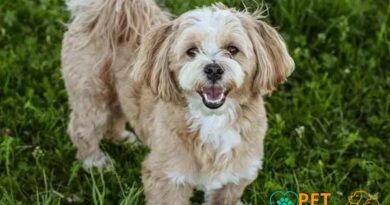O que é focinho do cachorro
What is a Dog’s Snout?
The snout of a dog, often referred to as the muzzle, is the elongated part of a dog’s face that houses its nose, mouth, and teeth. This structure is not only crucial for a dog’s appearance but also plays a vital role in its sensory perception and communication. The snout varies significantly among different breeds, influencing their ability to perform various tasks, from hunting to companionship.
Structure and Anatomy of the Dog’s Snout
A dog’s snout consists of several key components, including the nasal cavity, the maxilla (upper jaw), and the mandible (lower jaw). The nasal cavity is lined with olfactory receptors that allow dogs to detect a wide range of scents, making their sense of smell far superior to that of humans. The structure of the snout also supports the dog’s teeth, which are essential for feeding and grooming.
Functionality of the Dog’s Snout
The primary function of a dog’s snout is to facilitate the sense of smell. Dogs have approximately 220 million scent receptors in their noses, compared to about 5 million in humans. This incredible olfactory ability allows dogs to detect scents from miles away, making them excellent trackers and search-and-rescue animals. Additionally, the snout plays a role in thermoregulation, helping dogs cool down through panting.
Variations Among Breeds
Different dog breeds exhibit a wide range of snout shapes and sizes, which can affect their health and abilities. Breeds with long snouts, such as Greyhounds, are often better at breathing and cooling down, while brachycephalic breeds, like Bulldogs, have shorter snouts that can lead to respiratory issues. Understanding these variations is crucial for dog owners to ensure their pets’ well-being.
Health Issues Related to the Snout
Several health issues can arise related to a dog’s snout. Brachycephalic breeds are particularly prone to conditions like brachycephalic obstructive airway syndrome (BOAS), which can cause breathing difficulties. Additionally, dental problems can occur if the alignment of the teeth is affected by the shape of the snout. Regular veterinary check-ups are essential to monitor these potential issues.
Importance of the Snout in Communication
The snout also plays a significant role in canine communication. Dogs use their snouts to express emotions and intentions through various behaviors, such as sniffing, licking, and nuzzling. Understanding these behaviors can help dog owners better interpret their pets’ feelings and needs, fostering a stronger bond between them.
Care and Maintenance of the Snout
Proper care of a dog’s snout is essential for maintaining its health. Regular cleaning of the snout area, especially for breeds with facial folds, can prevent infections and irritations. Additionally, providing dental care, such as brushing teeth and offering dental chews, can help maintain oral health and prevent issues related to the snout.
Training and the Snout
The snout can also be a valuable tool in training. Dogs can be taught to use their sense of smell for various tasks, such as scent detection in search and rescue operations or even in competitive sports. Utilizing the dog’s natural instincts related to its snout can enhance training effectiveness and provide mental stimulation for the dog.
Conclusion: The Snout as a Vital Feature
In summary, the snout of a dog is a complex and essential feature that contributes to its overall health, communication, and abilities. Understanding the significance of the snout can help dog owners provide better care and create a more enriching environment for their pets. By recognizing the unique characteristics of their dog’s snout, owners can ensure their furry companions lead happy and healthy lives.



